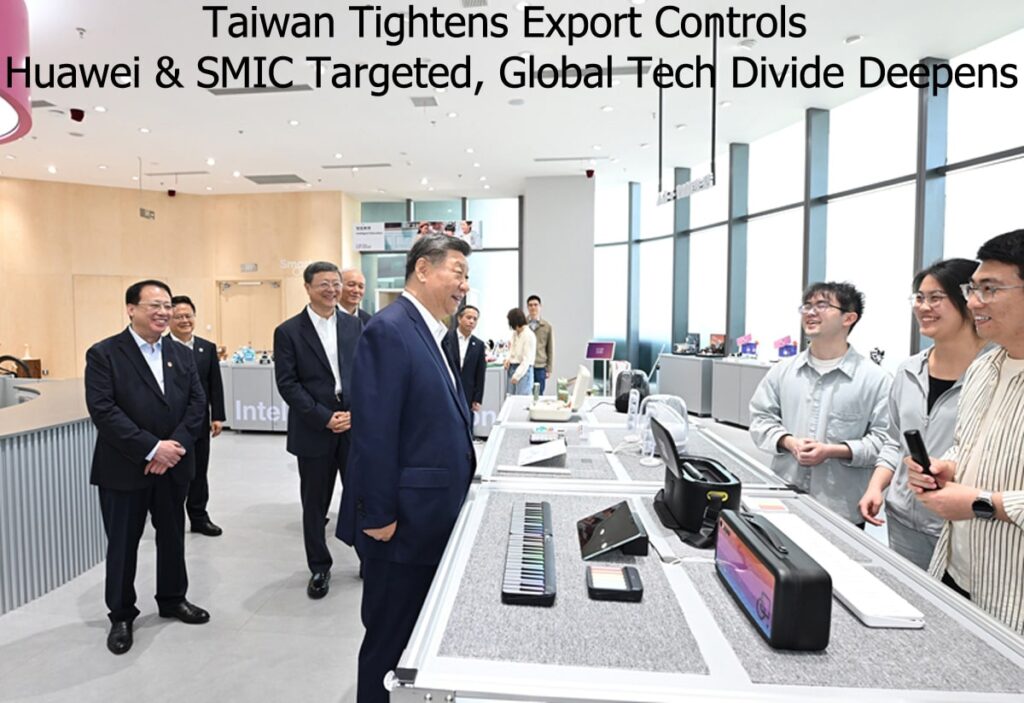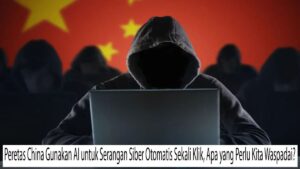The global tech landscape is heating up once again. Taiwan has officially added two of China’s tech giants, Huawei Technologies and Semiconductor Manufacturing International Corp (SMIC), to its list of strategic export controls. This decision not only impacts Taiwan-China trade relations but also reinforces the fragmentation of the global technology ecosystem, especially in the semiconductor and artificial intelligence (AI) sectors.
Taiwan’s Strategic Move Amid Global Rivalry
Taiwan’s International Trade Administration (TITA) declared a significant revision to its list of strategic export entities in mid-June 2025. There are now 601 entities from different nations, including China, Russia, Iran, Myanmar, and Pakistan. them, Huawei and SMIC have quickly become focal points.
With this update, all Taiwanese companies are now required to obtain government approval before exporting any high-tech equipment, components, or technology to these two Chinese firms. This effectively tightens the flow of technology from Taiwan, which remains a central hub for global semiconductor manufacturing.
“Taiwan’s national security and protection of strategic technologies remain top priorities in this policy update,” TITA stated in its official release.
Why Are Huawei and SMIC Targeted?
Both Huawei and SMIC stand at the core of China’s ambitions to achieve technological self-sufficiency, particularly in AI and semiconductor development.
- Huawei has been aggressively developing its AI supremacy through its Ascend chip series while leading the charge in next-generation telecommunications (5G & 6G).
- SMIC serves as China’s leading domestic chip manufacturer, though it remains heavily dependent on foreign lithography technology to catch up in the sub-7-nanometer process nodes.
With these export controls, Huawei and SMIC’s access to critical chip manufacturing components — largely supplied by Taiwanese producers like TSMC — will now be significantly restricted.
Taiwan’s Position in the Ongoing Tech War
In recent years, the United States has led a global effort to restrict exports of advanced technology to China, aiming to curb Beijing’s AI and military computing capabilities. While several allies such as the Netherlands, Japan, South Korea, and now Taiwan have aligned with Washington’s strategy, Taiwan’s latest move signals more than mere compliance — it is an assertion of its political and economic sovereignty to protect its technological edge and minimize security vulnerabilities.
Currently, Taiwan controls over 60% of global semiconductor manufacturing capacity, with TSMC as its industry leader. As such, Taiwan’s export control policies directly affect the global technology ecosystem, impacting everything from AI development and autonomous vehicles to supercomputing.
Beijing’s Strong Reaction and Potential Escalation
China wasted no time in condemning Taiwan’s decision. The action was deemed “discriminatory” and perhaps in violation of international trade standards by the Chinese Ministry of Commerce.
Some analysts anticipate Beijing might retaliate by limiting exports of rare earth minerals — critical raw materials for semiconductor manufacturing. Such a move would further escalate geopolitical tensions and strain the already fragile global semiconductor supply chain.
“This is no longer just a trade issue, but a battle for global technological supremacy in the AI era,” said one technology analyst from Nikkei Asia.
What Does This Mean for the Global AI Industry?
Beneath these policy changes lies a critical issue that will shape the global tech landscape for years to come: AI cannot advance without cutting-edge semiconductors.
Generative AI, machine learning, and modern cloud computing all rely on chips manufactured at 5-nanometer nodes or below — technologies currently mastered by only a handful of nations, with Taiwan at the center.
As the supply chain decouples, the world is moving toward two distinct technology blocs:
- The Western Bloc: The US, Taiwan, Japan, the Netherlands, and their allies.
- The China Bloc: striving for full self-sufficiency with domestically developed alternatives.
Consequently, the race for AI dominance will heavily depend on which side maintains control over the world’s most advanced semiconductor supply chains.
Conclusion
Taiwan’s decision to block exports to Huawei and SMIC marks not only another chapter in the trade war but a pivotal moment in the global battle for AI supremacy. As technology increasingly becomes the new arena of geopolitics, every export control decision made today will profoundly influence the global power balance in the years ahead.




